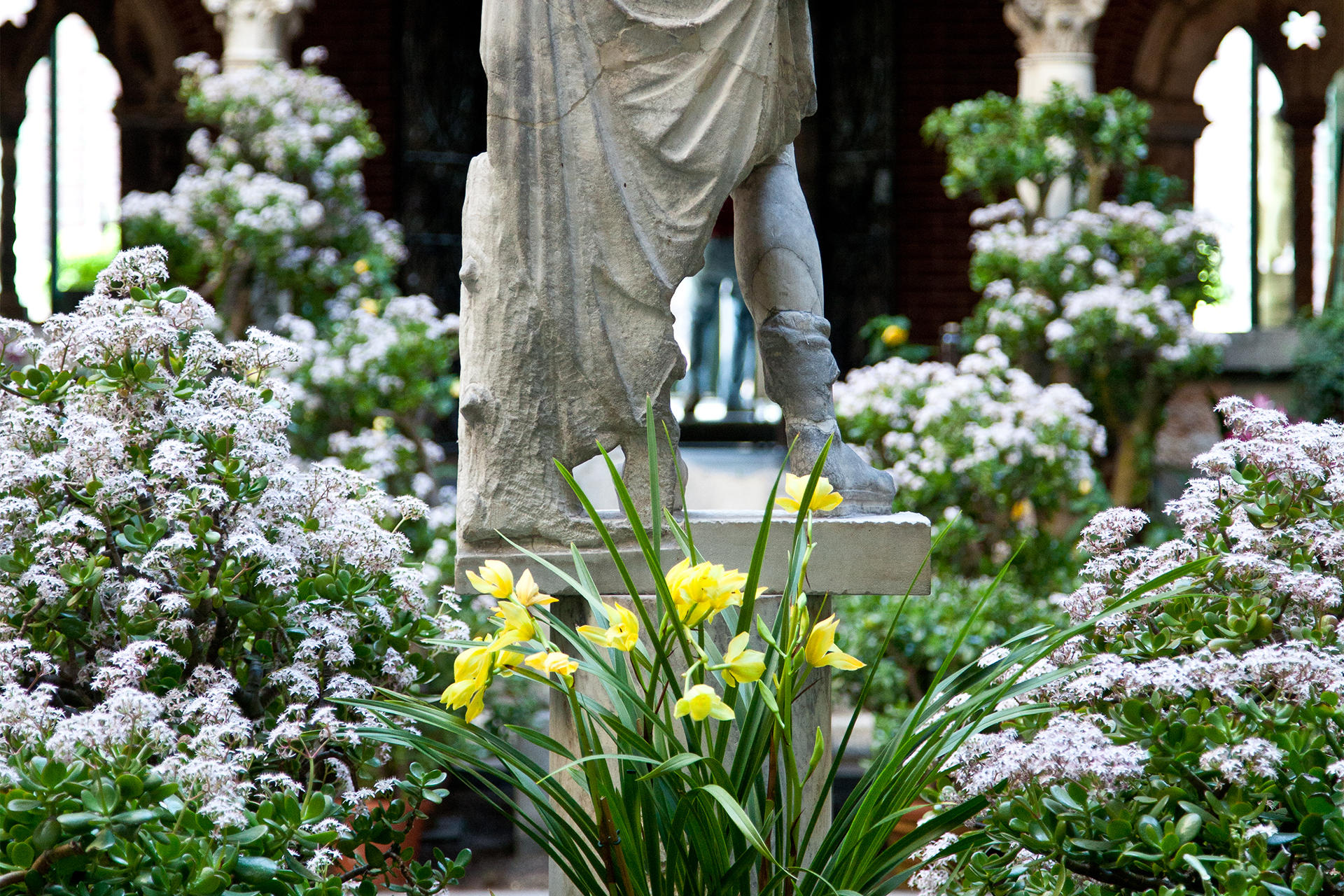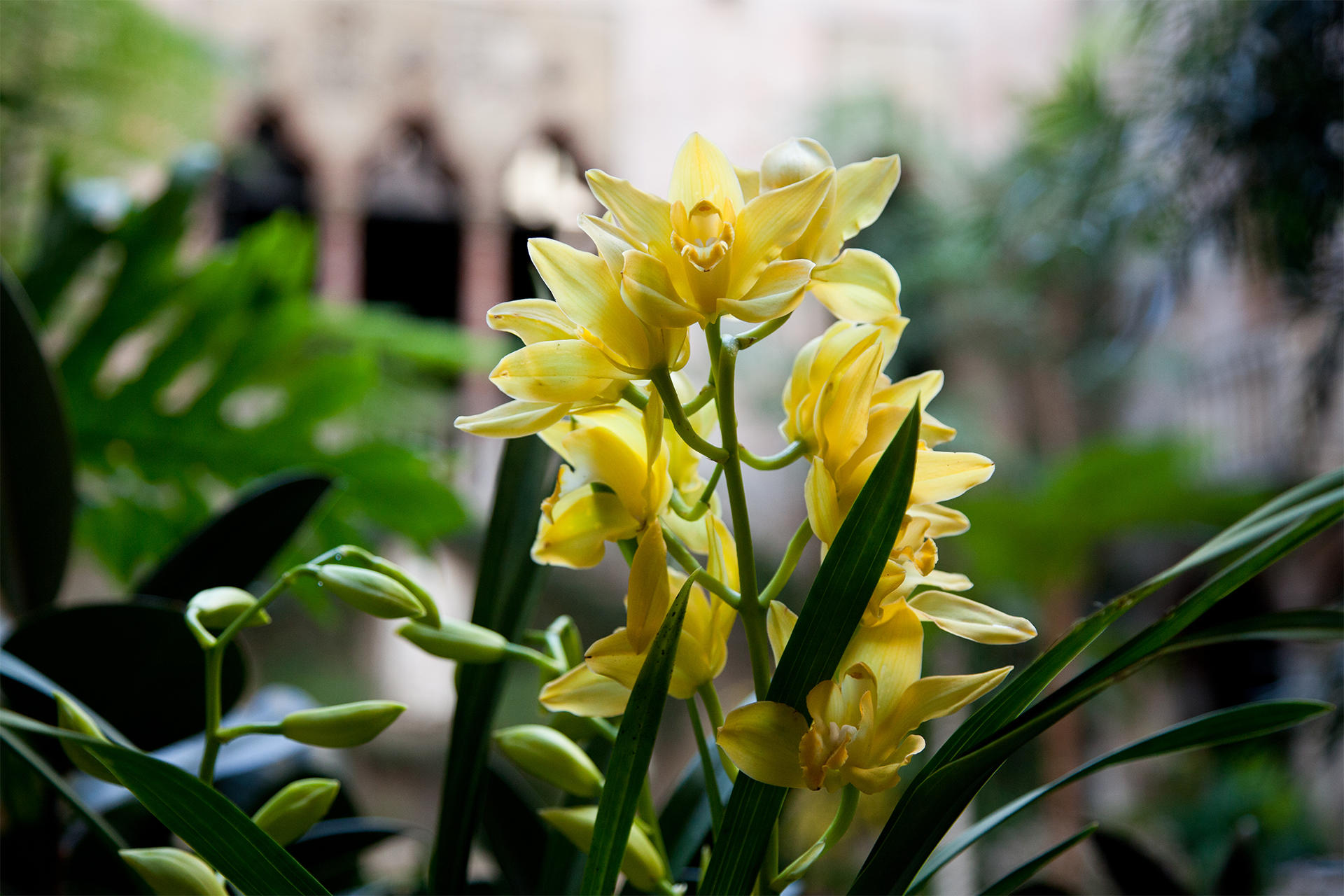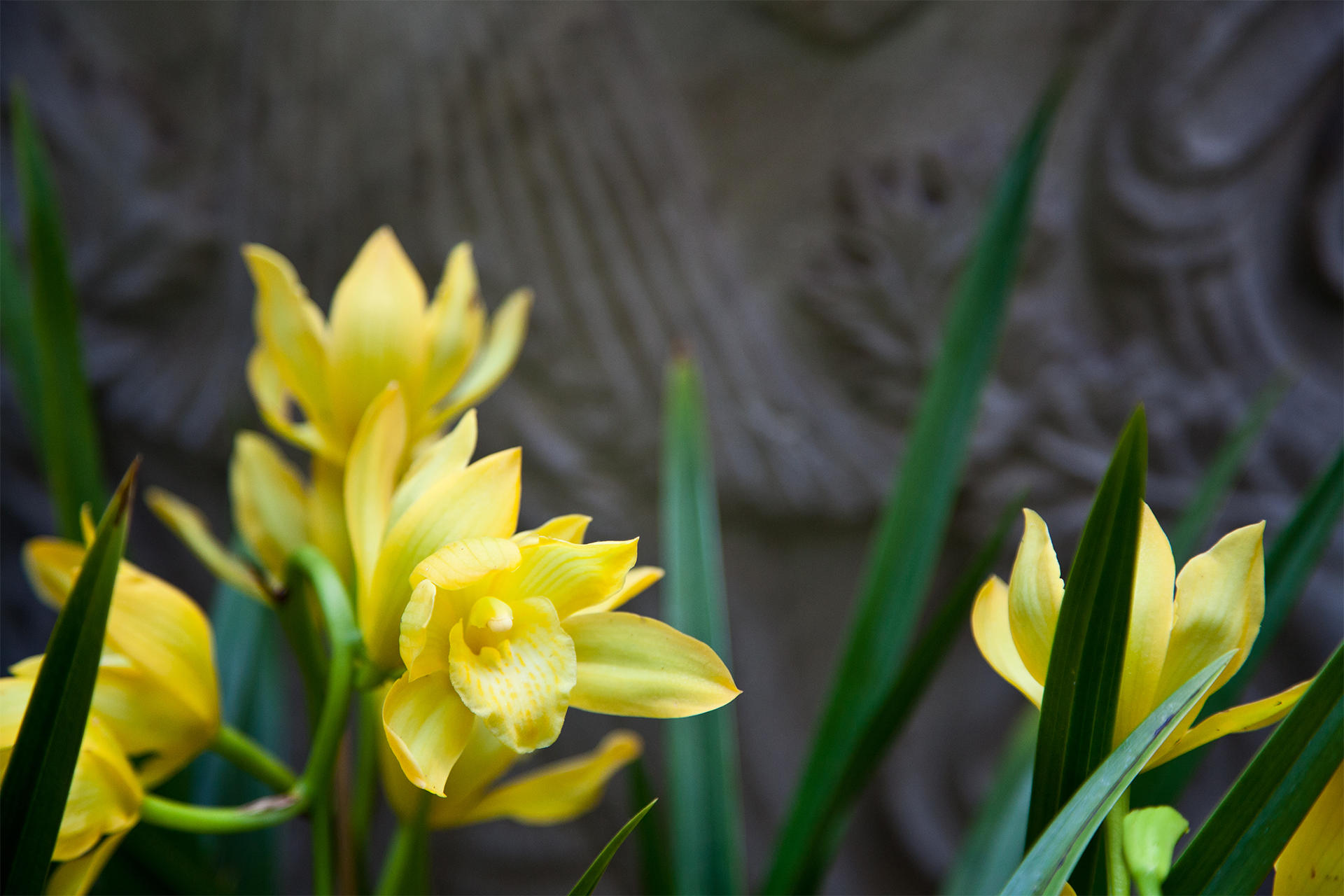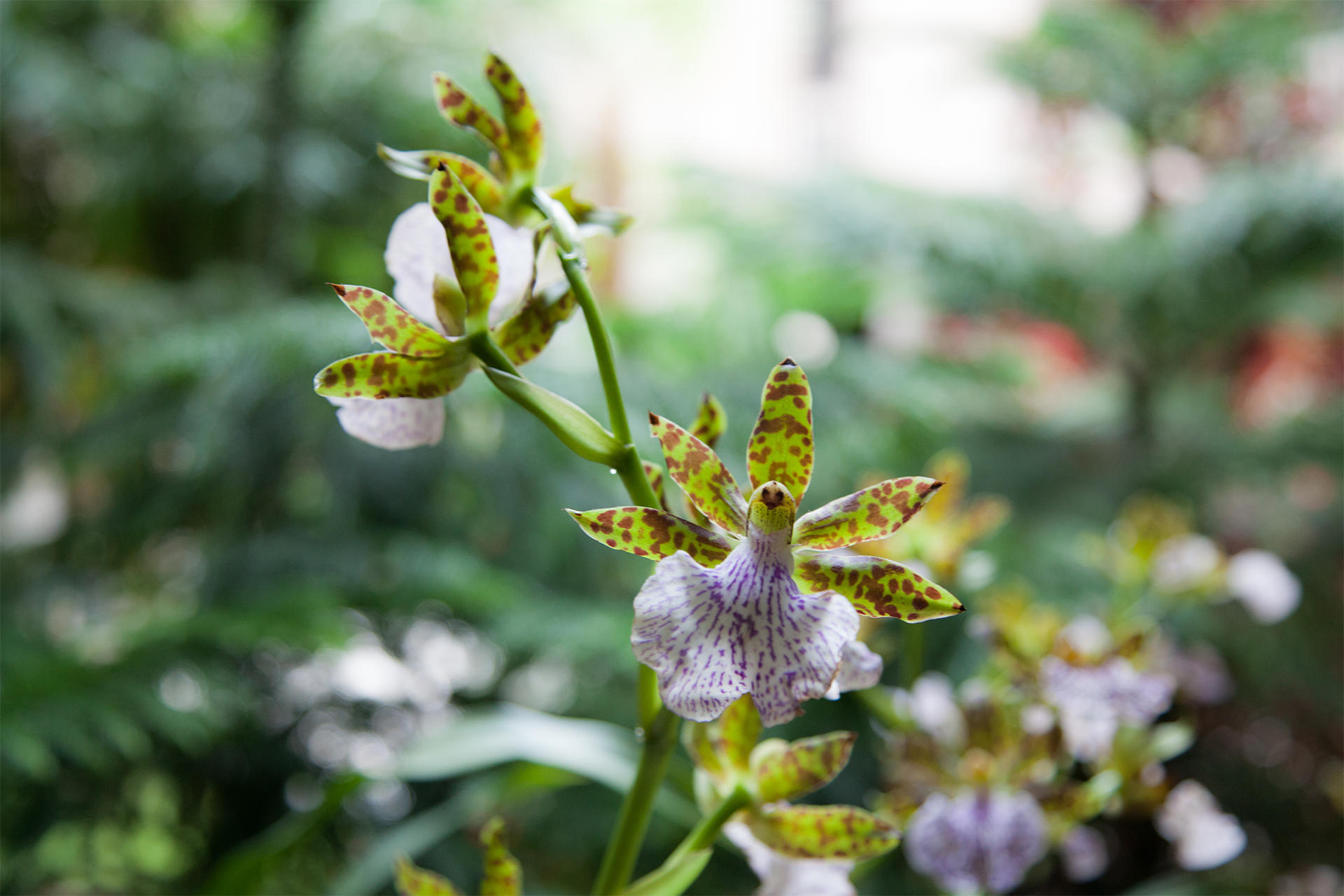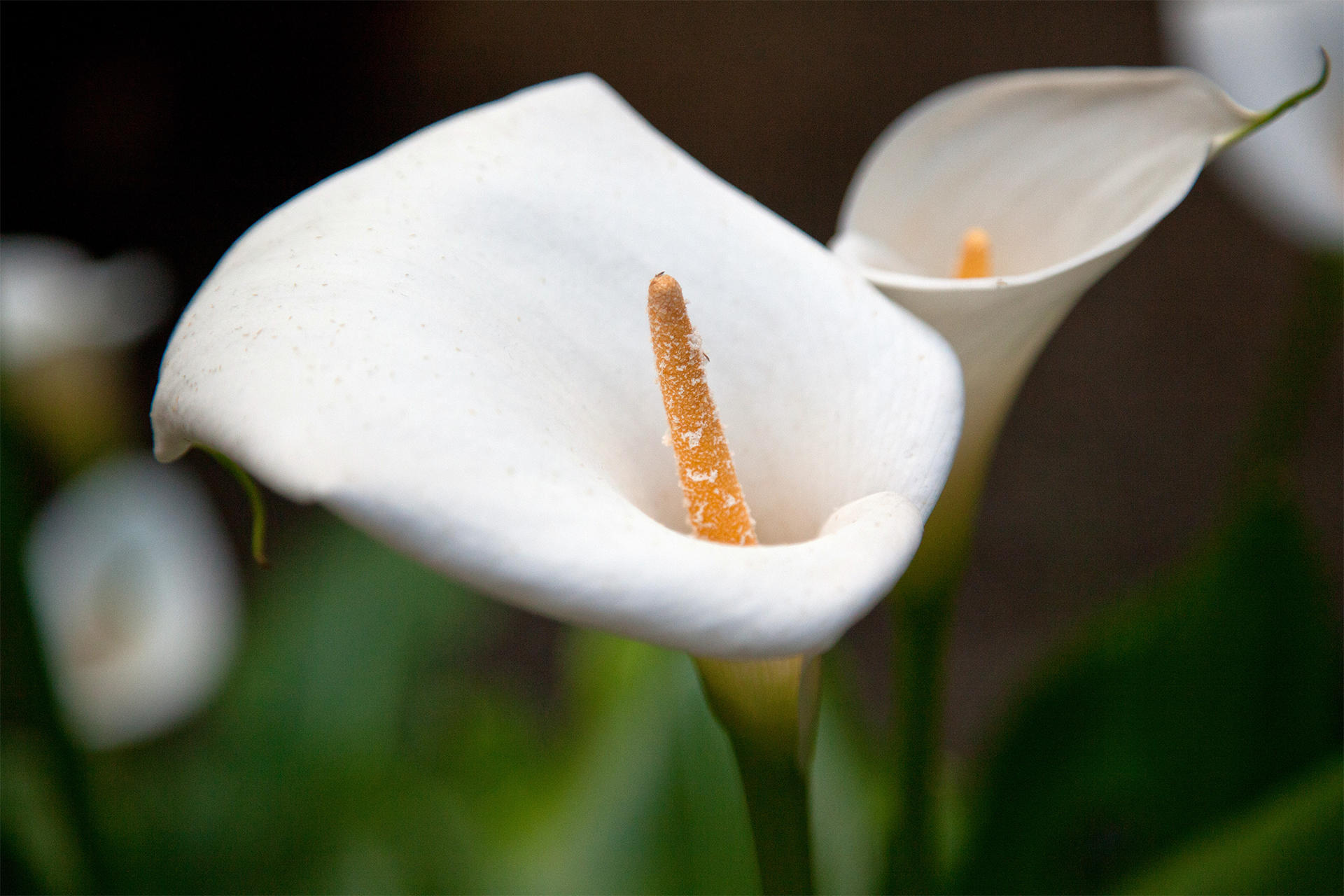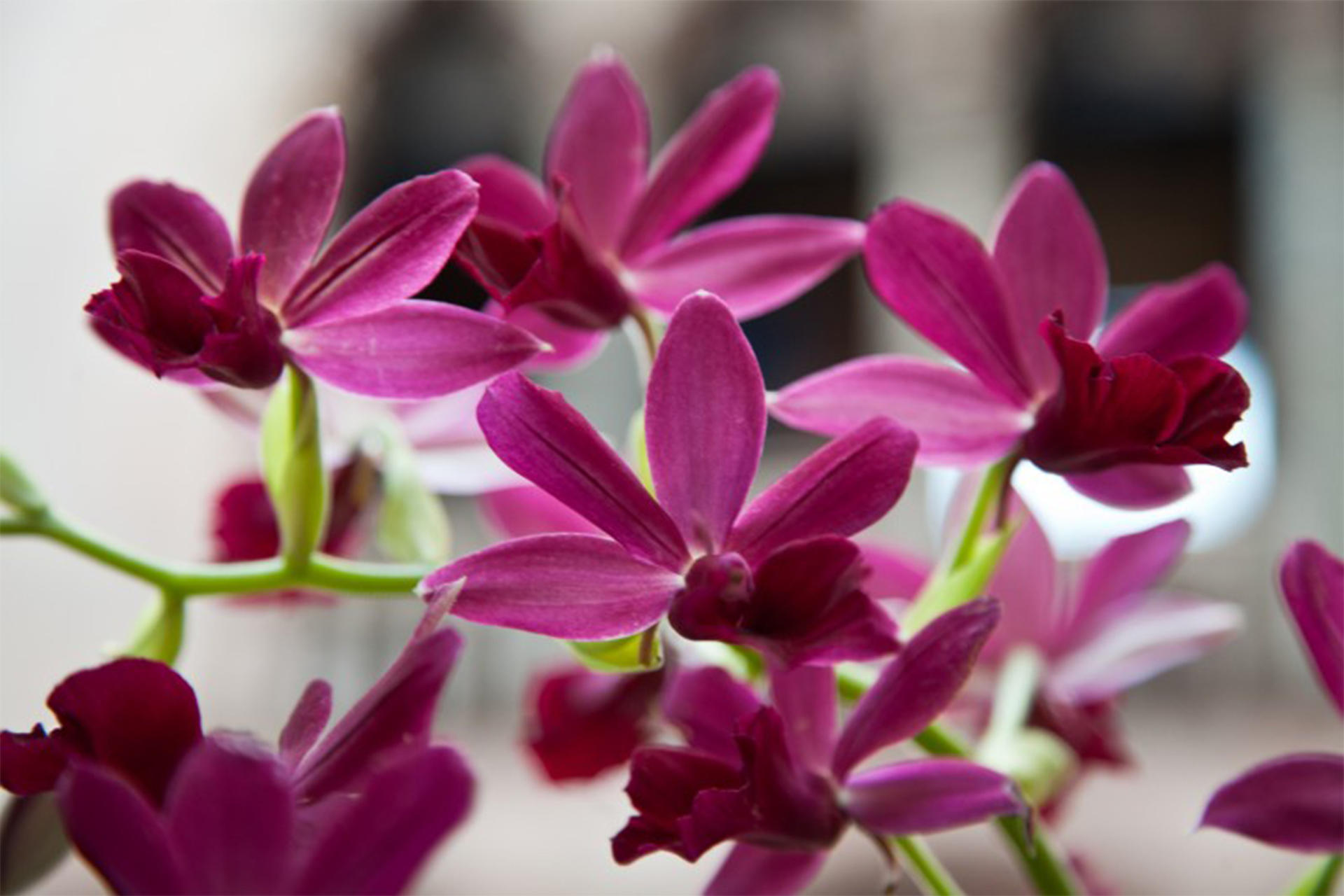[ERIKA RUMBLEY] Hi, I’m Erika Rumbley, Director of Horticulture at the Gardner. I’m so glad you’ve come in from the Boston cold to enjoy our Midwinter Tropics display. It features our collection of orchids, which thrive in tropical and subtropical climates. For me, the saturated colors of this installation give me a rush of energy as my eyes adjust from the grey winter outside. It almost feels medicinal, like a healing tonic.
Look for a lot of orchids with long, strappy leaves and a tongue-like form protruding from the middle of each flower. Those are called Cymbidiums. We grow them mostly in warm tones: yellows and oranges, along with a few deep reds. You may also see petite and speckled lady slipper orchids. They’re only about 3 or 4 inches tall, and we place them along the perimeter of the Courtyard. If you smell something that’s powerfully and deliciously fragrant, it’s probably an orchid called zygopetalums. We call them zygos.
Isabella was an avid orchid collector and grower. Unlike the plants for other seasons, which we often raise from seed or cuttings for each annual display, we have been tending our orchid plants for many decades. They’re part of the museum’s living collection.
There are also trees and shrubs in so many shades of green: including tiered Norfolk Island Pines, bromeliads that are the color of a lime, and glossy Sago Palms. I think of them as a lush frame for the delicate orchids. The combination becomes a kind of collage of plants that would never be together in nature. For me, this echoes how Isabella created this space: bringing together disparate elements in a way that’s intriguing, that’s beautiful – and draws our eyes to how they’re similar, and how they’re different.
And this courtyard installation is just one of about ten different ones we do every year.
The tall tree ferns around the four corners of the mosaic are some of the few elements that are here all year long. They’re not moveable anymore because they’ve rooted themselves in the soil below the building. These types of trees love water. They crave it so much that they broke through their pots searching for more moisture underground. If you look for the bulging part on each tree trunk, that’s the point in their growth where the trees broke through their pots.
Nearly every other plant changes with every installation. There are always key characters: plants that have a line back to ones that Isabella loved. These include ferns and palms, azaleas, chrysanthemums, and, of course, orchids.
Move around to find a good viewing spot for you. I have a few favorite spots of my own. One is facing the fountain head-on. You can see the fountain along the wall of the courtyard best by moving around the courtyard, to the area between the two columns that have lions on the bottom. On the right and left sides of the fountain you’ll see this stark symmetry of color and texture and scale all framed by the height of the space. Another favorite view is from any corner of the courtyard. That’s where you’ll find plants that break the symmetry – maybe a one-off orchid that just opened this morning. And from the upper floors you’ll be able to see the star shaped forms of the tree ferns, and the overall geometry of the plant placements.
When we’re caring for the living collection, we think not just about the health of the plants, but about everyone. So, we use organic methods, and that includes weekly releases of a mite that eats other mites.
Horticulturists work in this space every morning, 365 days a year! As we leave, we sweep the gravel paths so there are no footprints. For me, it’s a fantasy of an almost impossibly exuberant garden, somehow magically untouched by human hands.
Every time you come, the courtyard – and you – will be different. Open yourself to each experience.
